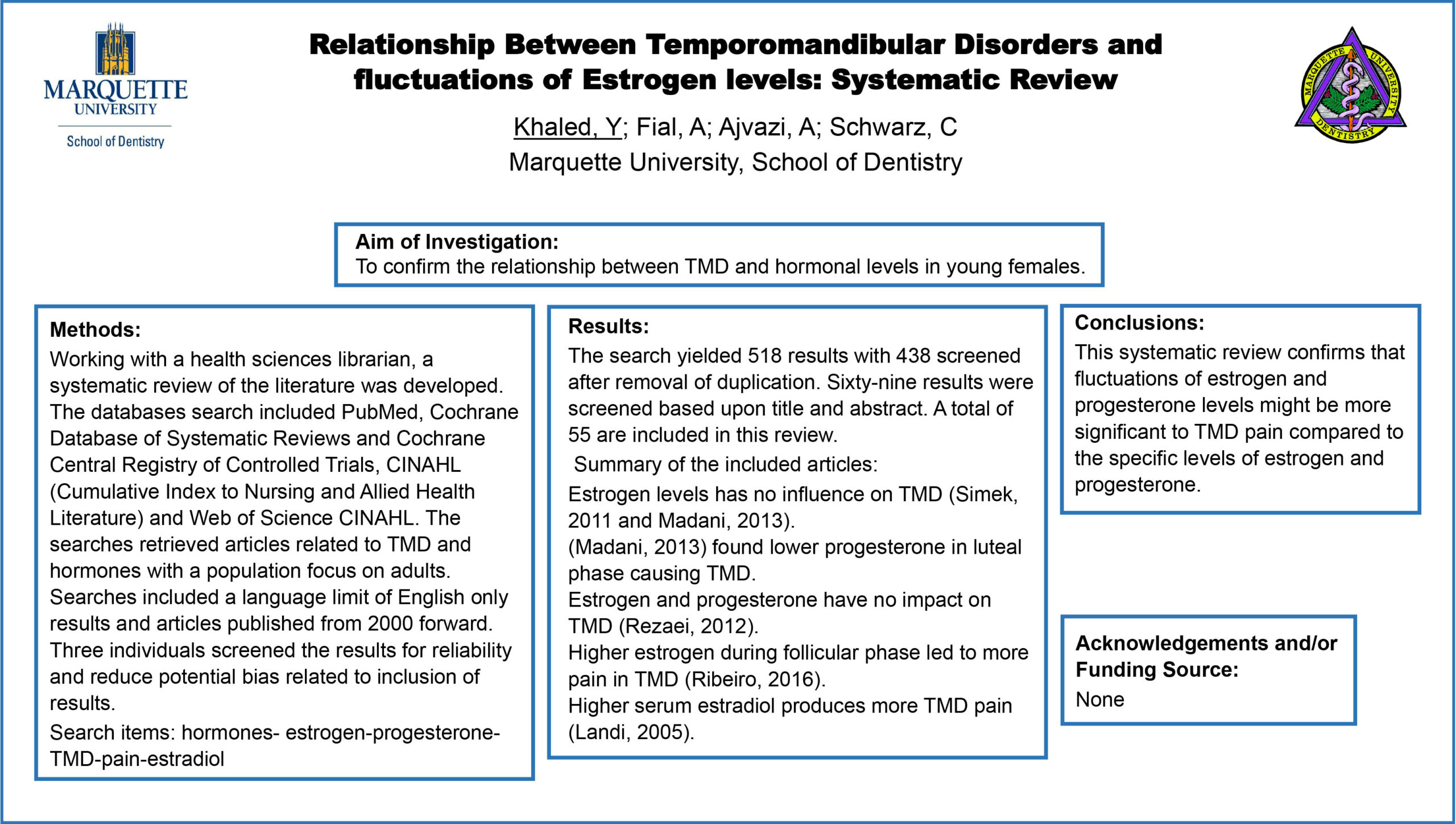This POSTER has VIDEO and IMAGE elements. Hover over the image above and use the ![]() arrows to navigate
arrows to navigate
Relationship Between Temporomandibular Disorders and fluctuations of Estrogen levels: Systematic Review
Authors: Khaled, Y; Fial, A; Ajvazi, A; Schwarz, C Affiliations: Marquette University, School of Dentistry
Aim of Investigation:
To confirm the relationship between TMD and hormonal levels in young females.
Methods:
Working with a health sciences librarian, a systematic review of the literature was developed. The databases search included PubMed, Cochrane Database of Systematic Reviews and Cochrane Central Registry of Controlled Trials, CINAHL (Cumulative Index to Nursing and Allied Health Literature) and Web of Science CINAHL. The searches retrieved articles related to TMD and hormones with a population focus on adults. Searches included a language limit of English only results and articles published from 2000 forward. Three individuals screened the results for reliability and reduce potential bias related to inclusion of results.
Search items: hormones- estrogen-progesterone-TMD-pain-estradiol
Results:
The search yielded 518 results with 438 screened after removal of duplication. Sixty-nine results were screened based upon title and abstract. A total of 55 are included in this review.
Summary of the included articles:
Estrogen levels has no influence on TMD (Simek, 2011 and Madani, 2013). (Madani, 2013) found lower progesterone in luteal phase causing TMD.
Estrogen and progesterone have no impact on TMD (Rezaei, 2012).
Higher estrogen during follicular phase led to more pain in TMD (Ribeiro, 2016). Higher serum estradiol produces more TMD pain (Landi, 2005).
Conclusions:
This systematic review confirms that fluctuations of estrogen and progesterone levels might be more significant to TMD pain compared to the specific levels of estrogen and progesterone.
Acknowledgements and/or Funding Source: None




Leave A Comment